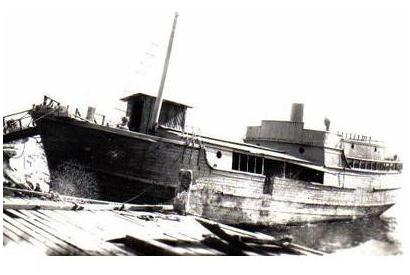I walked or bummed rides for my initial forays into war-ravaged Manila during January 1946. Early one such afternoon, just after I left the boat landing and was walking along a road amid destroyed government buildings, I was overtaken by an open-cab troop carrier that the GI’s referred to as a low boy. The driver was accompanied by another enlisted soldier and a uniformed female was sitting between them.
The driver hesitated as if he was going to give me a lift. The other soldier seemed to say something and the truck continued on, but had to slow in order to navigate a sharp turn. I dashed after the vehicle, grabbed a hold, and vaulted over its tailgate. One foot snagged the top of the gate and I was momentarily knocked breathless when I slammed onto the truck floor. The young lady was concerned and came back into the body of the truck.
After I assured her that I was uninjured, we sat there side by side and she introduced herself as Cora, a USO performer, while the unhappy soldiers were muttering something about Navy officers.
I invited Cora to a unique officers’ club called the Sugar Charlie. She invited me to the base where the USO troupe was camped because a movie was scheduled for that evening that she had to see. Via a borrowed jeep, Cora and I managed both.
Just a few months before a contingent of Navy divers had arrived in Manila for the purpose of accomplishing two tasks. They were sent there to retrieve the Philippine Government’s silver bullion in the form of crated 15-million one-peso coins that, nearly four-years earlier, were dumped into Manila Bay in order to prevent their capture by the Japanese Army. In addition, the divers were ordered to clear away the many wrecked ships that obstructed navigation. Neither was their first objective.

Their first task was the salvage of a sunken inter-island cargo vessel, about 120-feet in length, that had the Japanese designation SC; hence the name Sugar Charlie. The American salvagers beached the vessel at the bow; its stern remained afloat. They then converted the hulk into a unique conveniently located officers’ club for their exclusive use. Since our executive officer was a former Navy diver, all of the officers in BURLEIGH had access.
The salvagers were ingenious. In addition to the gangway rigged from Suger Charlie’s bow to the shore, they had deepened the area along its port side for access by their work boats. And, they had converted the enclosed main-deck cargo area from midships to the stern into a lounge that was uniquely and completely equipped.

The bar, tables and benches were made from local mahogany that was in keeping with the original rough hewn teak hull frames. Some of the lighting fixtures consisted of empty beer bottles arranged around bulbs that were sustained by one of their portable electric-power generators. There were various brass fittings such as a ship’s bell, binnacle and ports. The after end of the hull, what mariners call the counter, was cut away in order to provide a view across Manila Bay. But the most attractive feature was the neatly constructed mahogany bar with ash trays made from projectile casings and a brass foot rail. Behind the bar, carved on smoothly finished mahogany in large lettering, was the eyebrow-raising toast, “Here’s to our Wives and Sweethearts and May They Never Meet.”
Thus established, the Navy salvagers were prepared and ready to recover the silver bullion and to take on the very dangerous task of removing the wrecked ships.
Since there were women from the Army Nurse Corps and the Red Cross there as I had expected, Cora seemed to be at ease and pleased during the hour we spent in the unique officer’s club. Then we were off to the movie that she had to see.
The camp in which the USO troupe was billeted was located amidst some thick groves of mostly banana trees and bamboo. Enough of the vegetation was hacked away to provide a clearing for an outdoor theatre that featured plain wooden benches. The movie shown was Keys of the Kingdom, a rather profound presentation starring Gregory Peck in one of his earliest performances. The film was noteworthy because of it probably being the first to explore tension between Catholic priests. The story told of a few who focused solely on doing good while others were obsessed with advancement of their priestly careers. However, something else impressed me more.
I was absolutely amazed at the intensity with which Cora watched that movie. I couldn’t imagine anything that could distract her. She seemed to be absorbing everything, no matter how inconsequential, that she could apply to further her career.
Cora and I didn’t date again because, like ships that had passed each other in the night, her troupe was on its way elsewhere and my ship would eventually depart for Guiuan on Samar. Since then, I never saw Cora’s name posted in connection with any movie or stage play. However, I’m confident that she succeeded in some branch of the entertainment industry, perhaps as a writer, a director or even as a teacher of aspiring actors.
***************
Copyright © 2005 (text only) by Louis D. Chirillo
